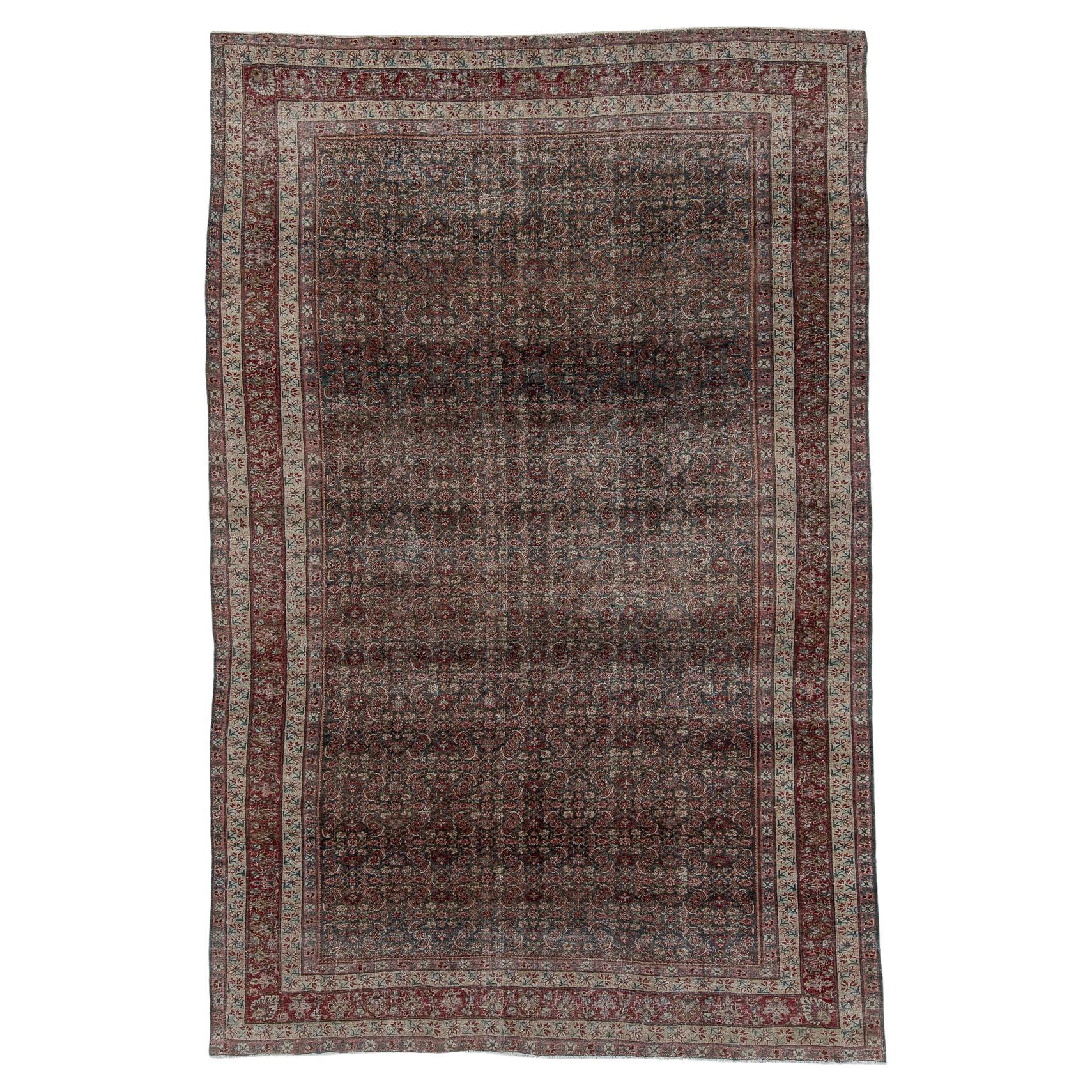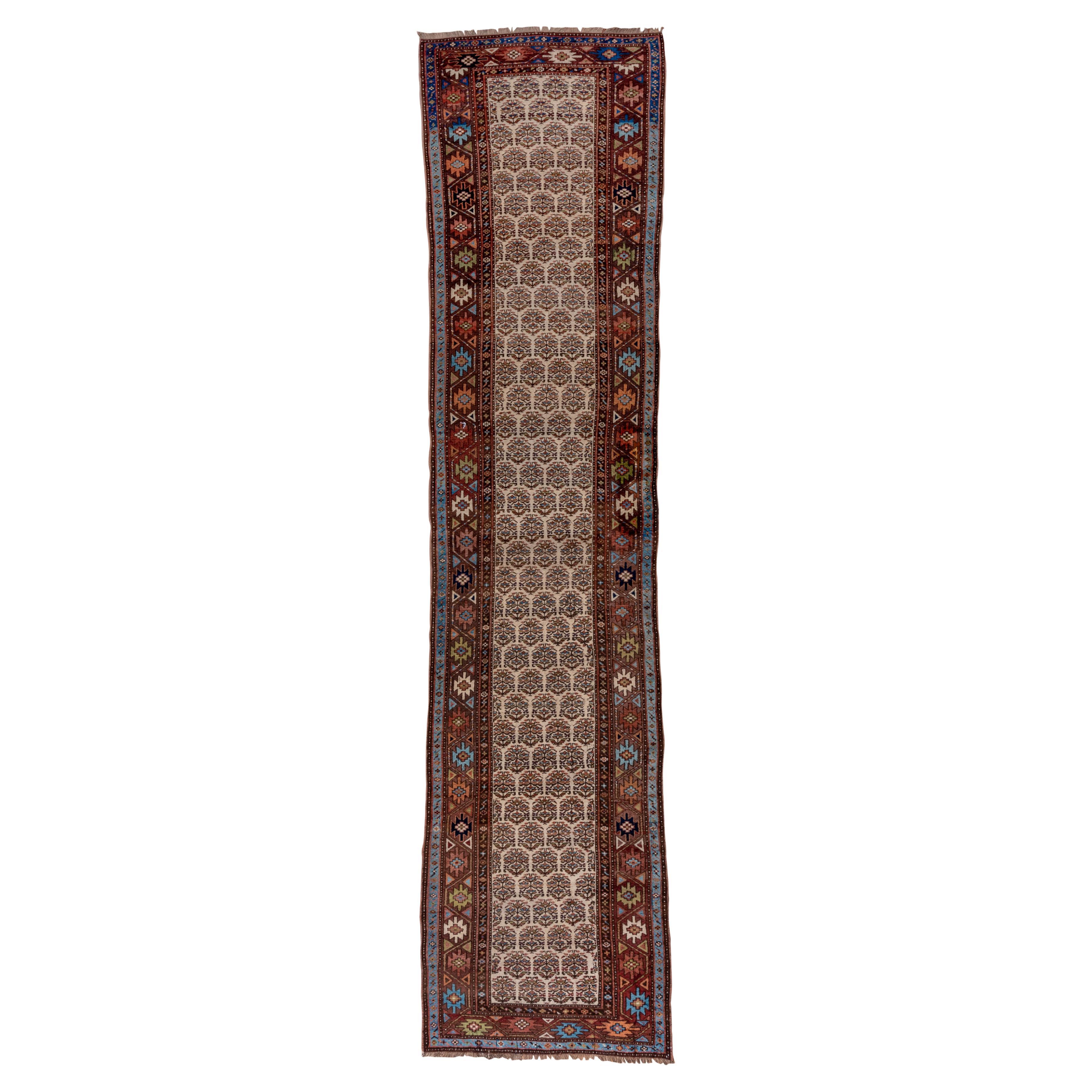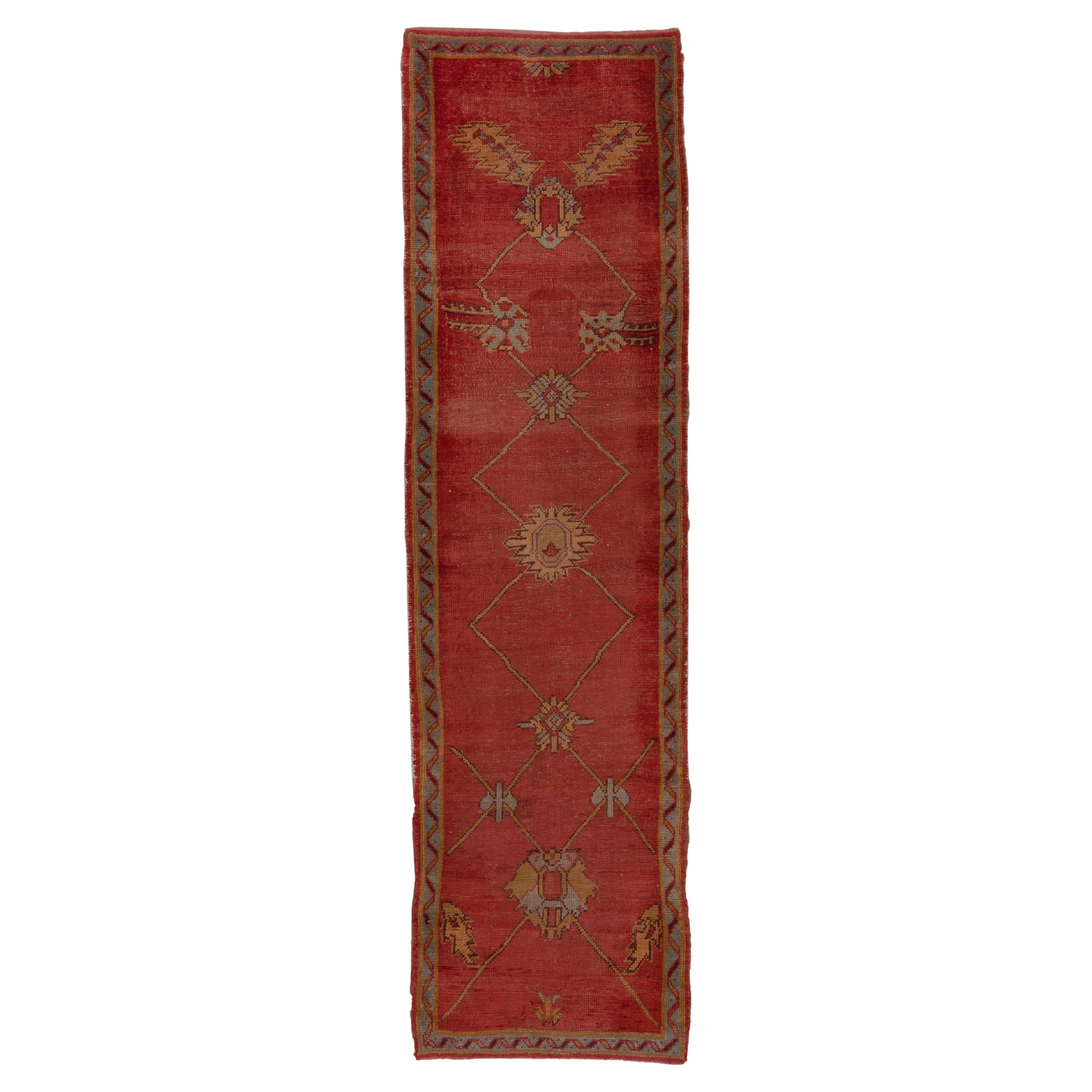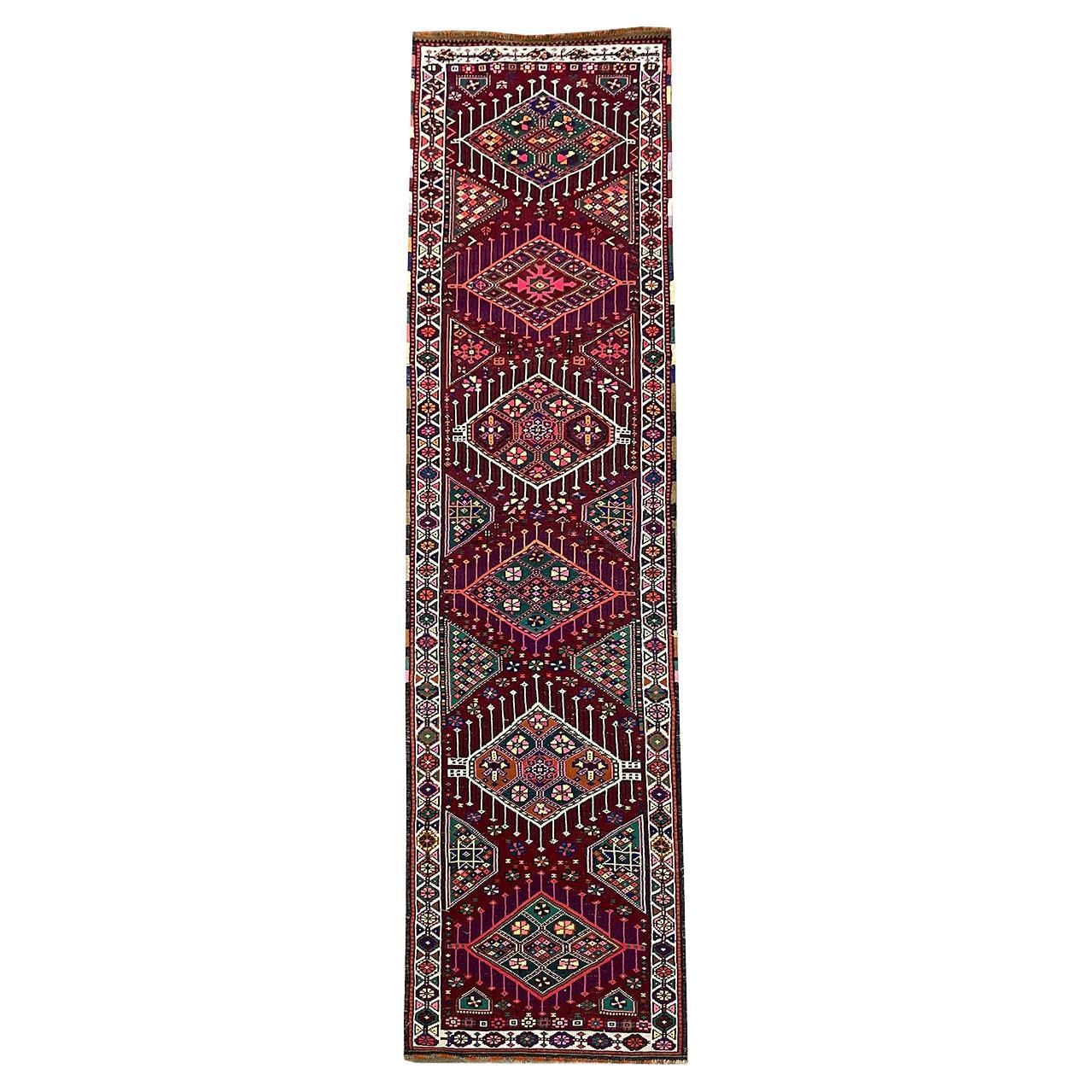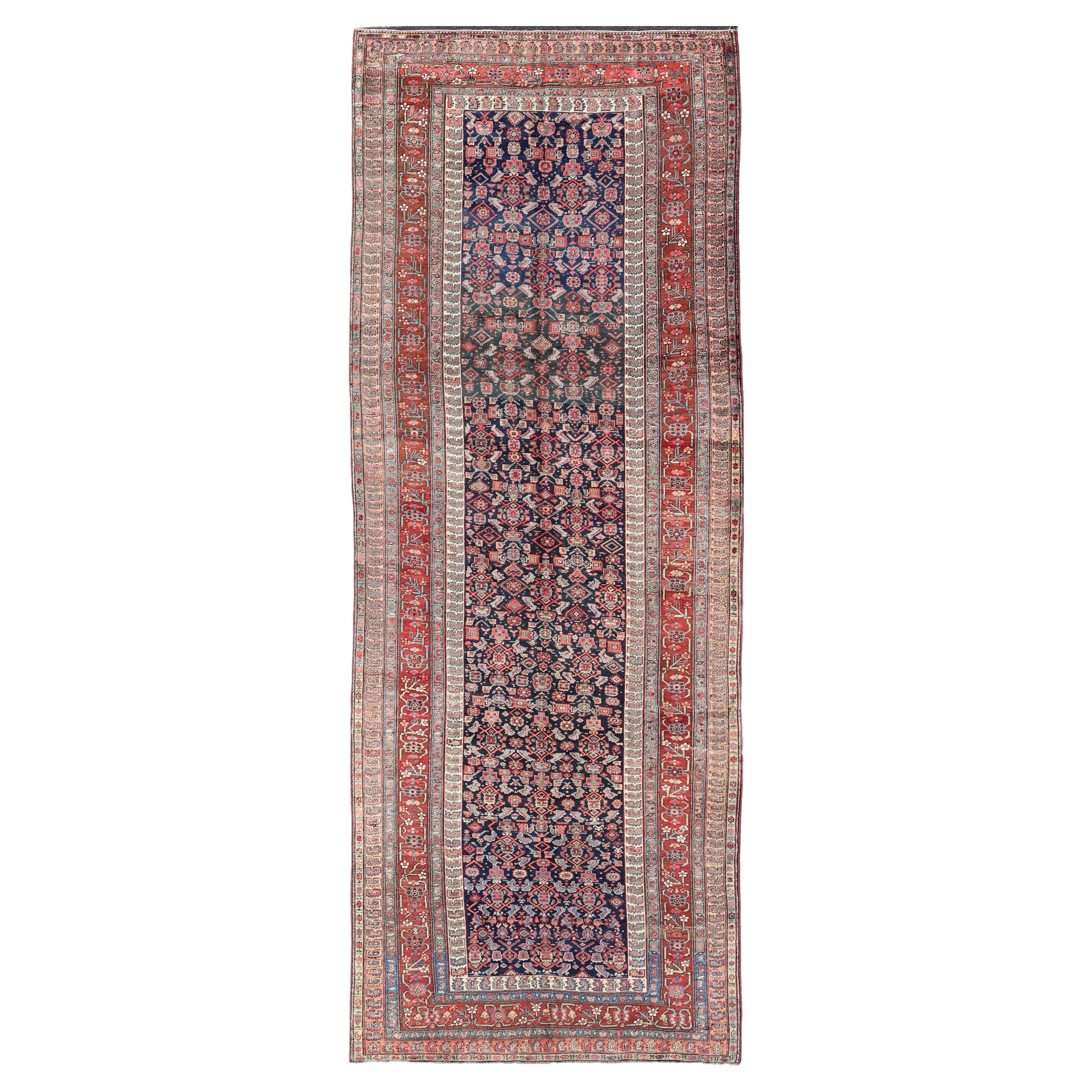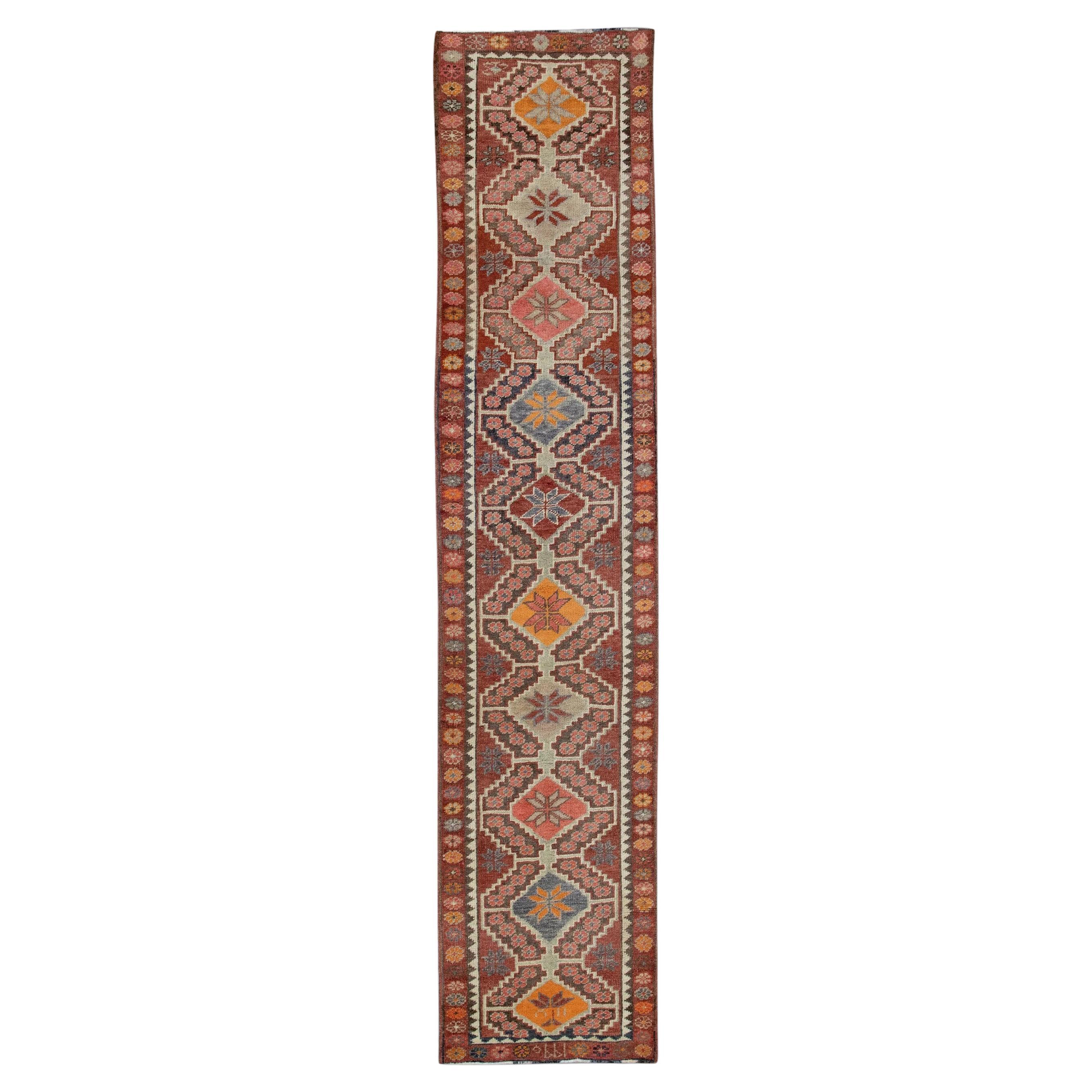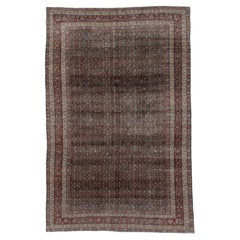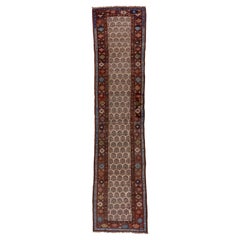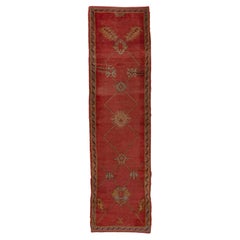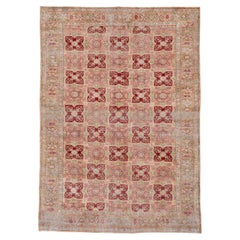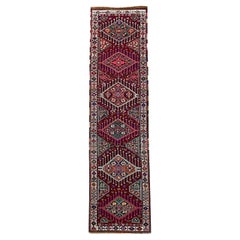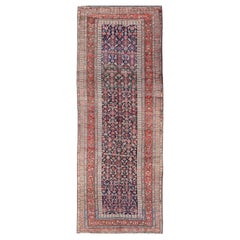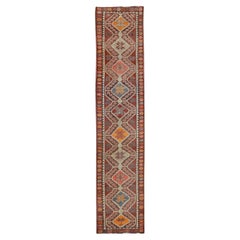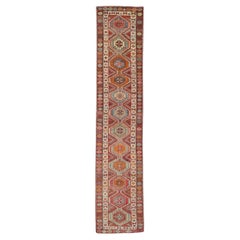Items Similar to Eliko RUgs by David Ariel Beautiful Antique Bidjar Runner with Bold Colors
Want more images or videos?
Request additional images or videos from the seller
1 of 9
Eliko RUgs by David Ariel Beautiful Antique Bidjar Runner with Bold Colors
$5,800
£4,400.91
€5,032.04
CA$8,101.03
A$9,007.24
CHF 4,703.08
MX$109,640.04
NOK 60,009.30
SEK 56,225.85
DKK 37,555.06
Shipping
Retrieving quote...The 1stDibs Promise:
Authenticity Guarantee,
Money-Back Guarantee,
24-Hour Cancellation
About the Item
Bidjar rugs, also known as Bijar rugs, are a type of hand-woven rug that originated in the town of Bidjar in the Kurdistan region of Iran. They are highly regarded for their exceptional durability, dense pile, and intricate designs. Bidjar rugs are considered among the finest and most resilient rugs produced in Iran.
One of the distinguishing features of Bidjar rugs is their dense construction. They are woven with a very high number of knots per square inch, often exceeding 200 knots per square inch (KPSI). This high knot density contributes to their remarkable durability and longevity.
Bidjar rugs typically have a thick and heavy pile, which gives them a plush and luxurious feel. The pile is tightly packed, making them resistant to wear and tear. The dense construction and tight knotting also make them highly resistant to dirt and stains.
In terms of design, Bidjar rugs often feature intricate floral patterns, geometric motifs, or medallion designs. The color palette is rich and vibrant, with deep reds, blues, and ivory being commonly used. The designs are meticulously woven, and the borders and central medallions are often emphasized with contrasting colors.
One of the unique characteristics of Bidjar rugs is their ability to resist bending and folding. This attribute is attributed to the special weaving technique used in their production, known as the "Bidjar knot" or "double-wefted" technique. The weavers tightly pack weft threads around the warp threads, creating a rug that is resistant to pressure and compression.
Bidjar rugs are highly sought after by collectors and rug enthusiasts for their exceptional quality and craftsmanship. They are considered an investment due to their durability and ability to withstand heavy use. The intricate designs and rich colors of Bidjar rugs also make them prized decorative pieces that can enhance the beauty of any interior space.
Eliko Rugs by David Ariel features a solidly and compactly woven west Persian Kurdish runner shows a strong contrast of a near black field closely covered by color row of small, geometric flowers, with a rose border of mother-and-child botehs alternating with barbed reversing cypresses. Inner sand border of reversing fan palmettes. and outer band with bars and stars. Medium weave
About the Seller
5.0
Vetted Professional Seller
Every seller passes strict standards for authenticity and reliability
Established in 1979
1stDibs seller since 2017
204 sales on 1stDibs
Typical response time: <1 hour
- ShippingRetrieving quote...Shipping from: New York, NY
- Return Policy
Authenticity Guarantee
In the unlikely event there’s an issue with an item’s authenticity, contact us within 1 year for a full refund. DetailsMoney-Back Guarantee
If your item is not as described, is damaged in transit, or does not arrive, contact us within 7 days for a full refund. Details24-Hour Cancellation
You have a 24-hour grace period in which to reconsider your purchase, with no questions asked.Vetted Professional Sellers
Our world-class sellers must adhere to strict standards for service and quality, maintaining the integrity of our listings.Price-Match Guarantee
If you find that a seller listed the same item for a lower price elsewhere, we’ll match it.Trusted Global Delivery
Our best-in-class carrier network provides specialized shipping options worldwide, including custom delivery.More From This Seller
View AllEliko Rugs by David Ariel Colorful Antique Persian Bidjar Carpet, Herati FIeld
Located in New York, NY
Antique Bidjar rugs are a type of handwoven carpet that originates from the region of Bidjar in Kurdistan, Iran. These rugs are highly renowned for their exceptional durability, uniq...
Category
Vintage 1920s Persian Tribal Persian Rugs
Materials
Wool
$8,800 Sale Price
20% Off
Eliko Rugs by David Ariel Long Persian Kurdish Runner, Paisley Field
Located in New York, NY
Kurdish rugs are traditional hand-woven textiles originating from the Kurdish regions, which span across parts of Turkey, Iran, Iraq, and Syria. These rugs have a rich history and are highly regarded for their craftsmanship and unique designs. Kurdish rugs are traditionally made by Kurdish nomadic or semi-nomadic tribes using a horizontal loom. They are primarily woven using wool The wool is often sourced from local sheep and is known for its durability and high quality. The rugs feature intricate patterns and motifs, which vary depending on the specific region and tribe. Each Kurdish rug is a reflection of the weaver's creativity, cultural heritage, and personal expression. The designs can include geometric shapes, floral patterns, medallions, animals, and symbols that hold cultural significance. The colors used in Kurdish rugs are typically vibrant and varied, ranging from earth tones to vivid hues. Kurdish rugs are prized for their durability and longevity. They are known for their tight and dense weaves, which contribute to their sturdiness. These rugs are commonly used as floor coverings but are also appreciated as decorative pieces and collectors' items due to their artistic value. Over time, Kurdish rugs have gained international recognition for their aesthetic appeal and cultural significance. They are sought after by collectors and enthusiasts around the world, and authentic Kurdish rugs continue to be produced by skilled artisans using traditional techniques. Eliko Rugs by David Ariel...
Category
Vintage 1930s Persian Tribal Persian Rugs
Materials
Wool
Eliko Rugs by David Ariel Unusual Antique Turkish Oushak Runner, Red Field
Located in New York, NY
Oushak runners refer to a type of carpet or rug that originates from the Oushak region in Western Anatolia, Turkey. Oushak rugs are renowned for their exceptional quality, craftsmanship, and distinct design characteristics. They are highly sought after and prized by collectors and interior designers. Oushak runners are long and narrow carpets specifically designed to be used as floor coverings in hallways, corridors, or as a centerpiece in narrow spaces. They are typically rectangular in shape and have a narrow width compared to their length. The dimensions of Oushak runners can vary, but they are generally longer than regular rugs and carpets. The distinguishing features of Oushak runners include their unique color palettes, intricate patterns, and soft, luxurious textures. They often exhibit a harmonious blend of warm, earthy tones, such as muted reds, soft blues, terracottas, beiges, and creams. The patterns on Oushak runners are typically floral or geometric in nature, featuring elaborate motifs and designs. The level of detail and intricacy in the patterns can vary, ranging from bold, large-scale motifs to more delicate, intricate designs. Oushak runners are traditionally handwoven using high-quality wool or a combination of wool and silk. The wool used in these rugs is known for its durability and lustrous sheen. Oushak rugs are renowned for their softness underfoot and their ability to age gracefully, becoming even more beautiful over time. Due to their aesthetic appeal and versatile nature, Oushak runners are popular choices for adding warmth, texture, and visual interest to various interior settings. They can complement a wide range of design styles, from traditional to contemporary, and can be used to enhance the beauty of hallways, staircases, entryways, or any narrow space that requires an elegant floor covering. Eliko Rugs by David Ariel...
Category
Vintage 1920s Turkish Oushak Turkish Rugs
Materials
Wool
Eliko Rugs by David Ariel Colorful Vintage Oushak Rug, Allover Floral Design
Located in New York, NY
Oushak rugs, also known as Usak rugs, are a type of hand-woven rug that originated in the town of Oushak (Usak) in western Turkey. They are highly regarded fo...
Category
Vintage 1930s Turkish Oushak Persian Rugs
Materials
Wool
Eliko Rugs by David Ariel Vintage Oushak Rug, Red Allover Field, High Pile
Located in New York, NY
Oushak rugs are a type of traditional handwoven rug that originated in the town of Uşak, located in western Turkey. They are highly regarded for their exceptional quality, unique des...
Category
Vintage 1940s Oushak Turkish Rugs
Materials
Wool
$2,000 Sale Price
20% Off
Antique Sarab Runner, circa 1900s
Located in New York, NY
In the general Serab manner, with three hexagonal ivory medallions set within longer, camel panels with stiff green vine patterns, and within two rosette borders and a central oyster...
Category
Antique Late 19th Century Persian Tribal Persian Rugs
Materials
Wool
You May Also Like
Mid-20th Century Handmade Turkish Runner from Silk Road Rug Inc Collection
Located in Los Angeles, CA
Vintage Turkish Rug 4352, Country of Origin: Turkish Rugs, Circa Date: 1950 – This stunning Turkish rug is more than just a piece of decor – it is a work of art. It was woven in the ...
Category
20th Century Turkish Tribal Turkish Rugs
Materials
Wool, Cotton
Antique Persian Bidjar Long Gallery Rug with All-Over Sub-Geometric Design
Located in Atlanta, GA
Measures: 6'2 x 16'4
Antique Persian Bidjar Long Gallery Rug with All-Over Sub-Geometric Design. Keivan Woven Arts; rug EMB-22111-15107; country of origin / type: Persian / Bidjar, ...
Category
Early 20th Century Persian Tribal Persian Rugs
Materials
Wool
Red Multicolor Vintage Turkish Runner 2'10" x 13'4"
By Asian Modern
Located in Houston, TX
Introducing a one-of-a-kind vintage Turkish hand-knotted wool rug, carefully crafted by skilled artisans using traditional techniques passed down through generations. This exquisite ...
Category
Vintage 1960s Turkish Tribal Turkish Rugs
Materials
Wool
$1,447 Sale Price
40% Off
1960s Red Multicolor Vintage Turkish Runner 2'9" x 12'10"
By Asian Modern
Located in Houston, TX
Introducing a one-of-a-kind vintage Turkish hand-knotted wool rug, carefully crafted by skilled artisans using traditional techniques passed down through generations. This exquisite ...
Category
Vintage 1960s Turkish Tribal Turkish Rugs
Materials
Wool
$1,357 Sale Price
40% Off
Antique Persian Hamadan Gallery Runner in Wool with All-Over Tribal Design
Located in Atlanta, GA
This antique Persian Hamadan rug has been hand-knotted in wool and features an all-over sub-geometric design rendered in red's, pink, green, and shades of blue. A complementary, mult...
Category
Early 20th Century Persian Malayer Persian Rugs
Materials
Wool
Antique Persian Qashqai Runner. 3 ft 5 in x 12 ft 9 in
Located in New York, NY
Antique Persian Qashqai Runner Rug, Country of Origin: Persian Rug, Circa date: 1920. Size: 3 ft 5 in x 12 ft 9 in (1.04 m x 3.89 m)
Category
20th Century Persian Tribal Persian Rugs
Materials
Wool
More Ways To Browse
1920s Compact
Antique Folding Fans
Modern Aubusson Tapestry
Oval Chairs
Reed Table Base
Ship Painting Framed
Small Kitchen Tables
Smoked Glass Coffee Table Mid Century
Stickley Arts And Crafts Furniture
Stool With Turned Legs
Triangular Dining Table
Used Packing Tables
18th Century Blue White China
19th Century Mahogany Writing Table
Black Glass Pitcher
Brushed Steel Coffee Table
Butterfly Tables
Carrara Home Design
